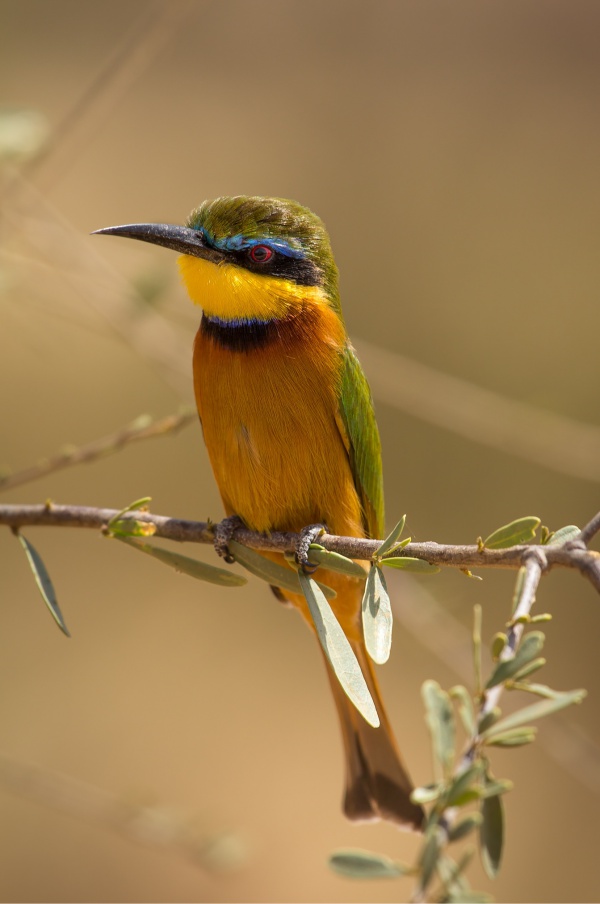Facts About Little bee-eater
The little bee-eater is an enchanting bird belonging to the bee-eater family, Meropidae, and is widespread across Sub-Saharan Africa. Although its name suggests otherwise, it should not be confused with the little green bee-eater. These birds are a kaleidoscope of colors, featuring green upper bodies, yellow throats, black neckbands, and brown upper chests. They hold the distinction of being the smallest bee-eater in Africa, measuring just 15-17 cm in length.
These diminutive birds are abundant and easily observable throughout their range, with a remarkable population estimated between 60-80 million. They favor open areas proximate to water for breeding and construct their nests in tunnels they excavate in sandy banks or abandoned Aardvark burrows. A typical nest contains 4-6 white eggs, which are meticulously tended to by both parents.
In terms of diet, little bee-eaters have a particular preference for insects, especially bees, wasps, and hornets. They catch their prey in mid-air from low perches and employ a clever technique to remove the stingers before consumption. Although they generally nest solitarily, these sociable birds enjoy congregating to roost together on tree branches, creating a delightful spectacle.

 Cameroon
Cameroon